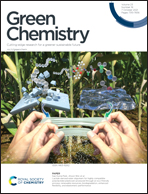Biotransformation of nylon-6,6 hydrolysate to bacterial cellulose
Abstract
In this study, the abundant global textile waste old nylon-6,6 was utilized as a substrate for bacterial cellulose (BC) production by Taonella mepensis WT-6. Briefly, different ratios (dry matter/v, 2.5%, 5%, 10%, or 15%) of nylon-6,6 waste were treated with 15% sulfuric acid for 2, 4, and 6 h, termed as nylon-6,6 acid hydrolysate (NAH). The highest depolymerization efficiency of nylon-6,6 waste was found to be 99.1% at 10% nylon-6,6 after 4 h of acid hydrolysis and released the maximum hexamethylenediamine (HMD), which resulted in a nearly complete degradation of nylon-6,6 to HMD, which was then converted to BC by T. mepensis. The structure and properties of BC films produced from Hestrin and Schramm medium (BC-HS) and nylon-6,6 acid hydrolysate (BC-NAH) media were comparatively studied by Fourier transform infrared spectroscopy (FTIR), mechanical properties, thermogravimetric analysis (TGA), X-ray diffraction (XRD), field-emission scanning electron microscopy (FE-SEM), and hydrophilicity analysis. The results demonstrated that the structural features of BC-NAH were comparable to BC-HS, suggesting that nylon-6,6 waste could be used as an inexpensive substrate for the cost-effective industrial production of BC.



 Please wait while we load your content...
Please wait while we load your content...